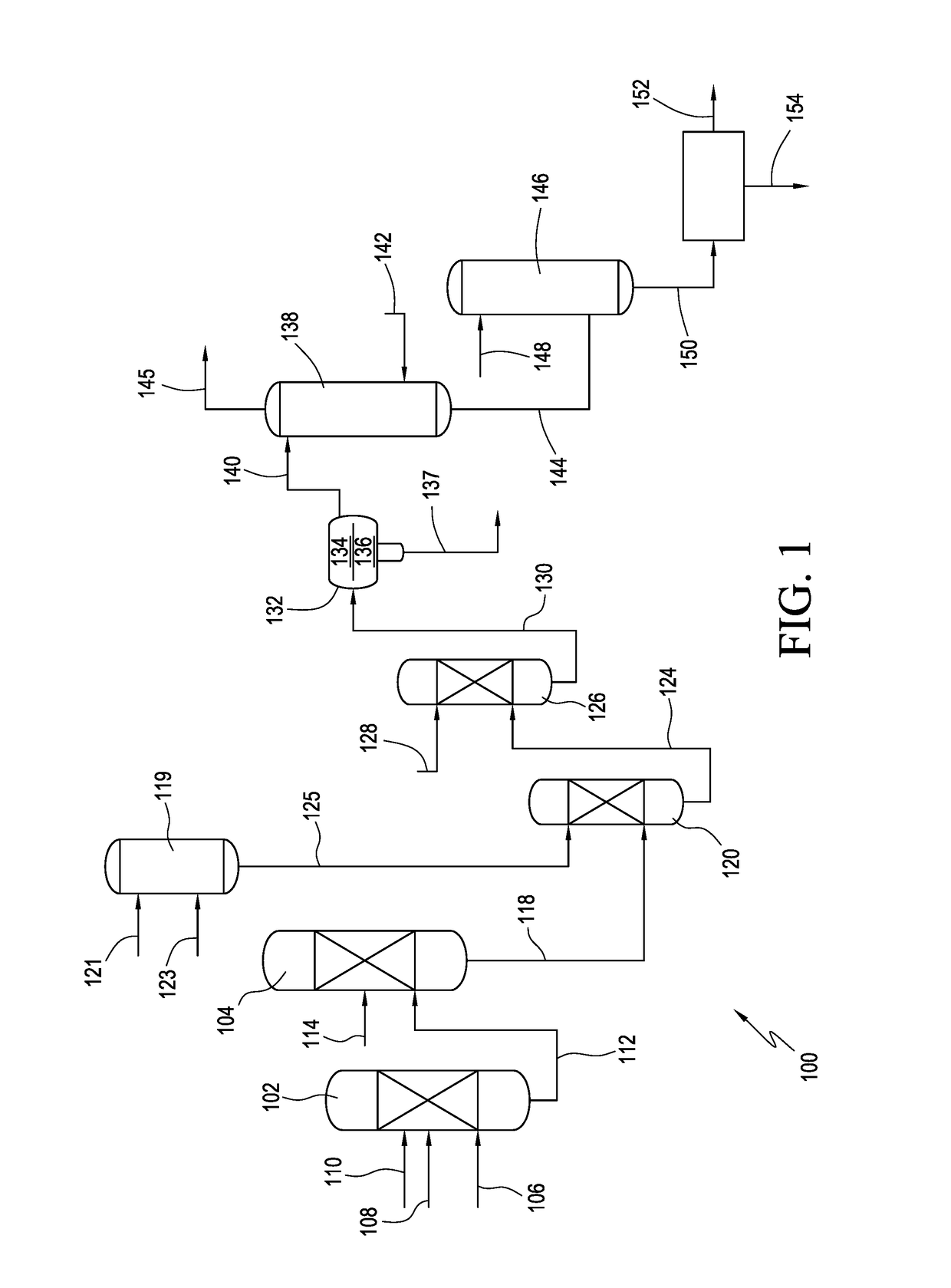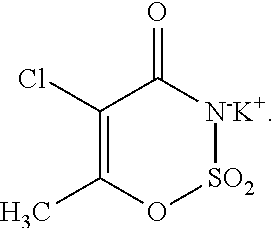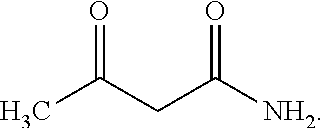Acesulfame potassium compositions and processes for producing same
a technology of acesulfame potassium and composition, applied in the field of acesulfame potassium, can solve the problems of consumer dissatisfaction and failure to meet regulatory standards
- Summary
- Abstract
- Description
- Claims
- Application Information
AI Technical Summary
Benefits of technology
Problems solved by technology
Method used
Image
Examples
example 1
[0159]Liquid sulfur trioxide and dichloromethane were continuously fed, contacted (to form a cyclizing agent composition), and cooled into a static mixer at 1220 kg / h and 8000 kg / h, respectively. The temperature of the cooled cyclizing agent composition was 11° C. The mixture was held in the static mixture for less than 5 minutes and then fed into a cyclization reactor, thus contact time was less than 5 minutes. In the cyclization reactor the sulfur trioxide / dichloromethane composition was reacted with a solution of acetoacetamide-N-sulfonate triethylammonium salt (acetoacetamide salt) in dichloromethane. The resultant cyclized product was hydrolyzed and worked up to yield a crude acesulfame potassium composition comprising (non-chlorinated) acesulfame potassium. Testing for 5-chloro-acesulfame potassium content was performed using the HPLC equipment and techniques discussed herein. In particular, the HPLC analysis was performed using an LC Systems HPLC unit from Shimadzu having a C...
PUM
| Property | Measurement | Unit |
|---|---|---|
| temperature | aaaaa | aaaaa |
| wt % | aaaaa | aaaaa |
| temperature | aaaaa | aaaaa |
Abstract
Description
Claims
Application Information
 Login to View More
Login to View More - R&D
- Intellectual Property
- Life Sciences
- Materials
- Tech Scout
- Unparalleled Data Quality
- Higher Quality Content
- 60% Fewer Hallucinations
Browse by: Latest US Patents, China's latest patents, Technical Efficacy Thesaurus, Application Domain, Technology Topic, Popular Technical Reports.
© 2025 PatSnap. All rights reserved.Legal|Privacy policy|Modern Slavery Act Transparency Statement|Sitemap|About US| Contact US: help@patsnap.com



